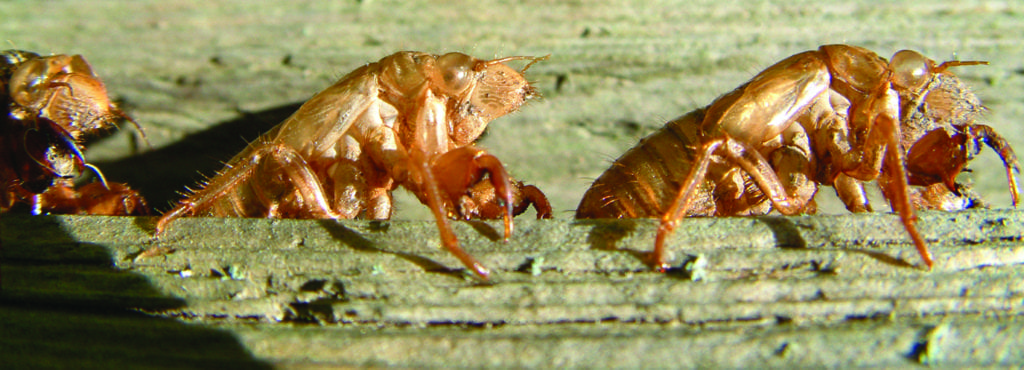Cicadas (November 8)


Every year on hot summer days, the treetops ring with the high-pitched sound of an insect called the annual cicada. Its call can be heard more than 400 yards away. The sound you hear is the male calling to the female. They mate and live for only a few weeks. After the eggs hatch, the nymphs drop to the ground, burrow into the soil, and feed on the sap of plant roots until the following year. Then, on hot summer days, they emerge, molt, climb high into a tree, find a mate, and the cycle repeats.
Another type of cicada is called the periodic cicada. The periodic cicadas’ lifecycle is a bit more unusual; they stay underground as nymphs for 17 years (13 years for another species). The 17-year cicadas live in Northeast USA, while the 13-year cicadas live in the Midwest and Southeastern parts of the USA. All of these cicadas emerge from the ground on the same day, either 17 or 13 years after the eggs were laid. Imagine millions of cicadas emerging all at the same time and singing incredibly loudly from the tree tops. Imagine all these insects emerging within a few hours of one another, all timed 17 or 13 years after the eggs were first laid! What a strange and wonderful “alarm clock” built within them that tells millions of nymphs it is time to come out of the ground and mate. How did they get this built-in alarm clock? Clocks do not happen by accident and chance. There had to be a clockmaker, and the cicadas’ clockmaker is God!
Ecclesiastes 3:1
KJV: To every thing there is a season, and a time to every purpose under the heaven:
NIV: There is a time for everything, and a season for every activity under the heavens:
Reference
Fulbright, Jeannie K. 2005. Exploring Creation with Zoology: Flying Creatures of the Fifth Day. Apologia Educational Ministries, Inc.: Anderson, IN. p. 209-210.
